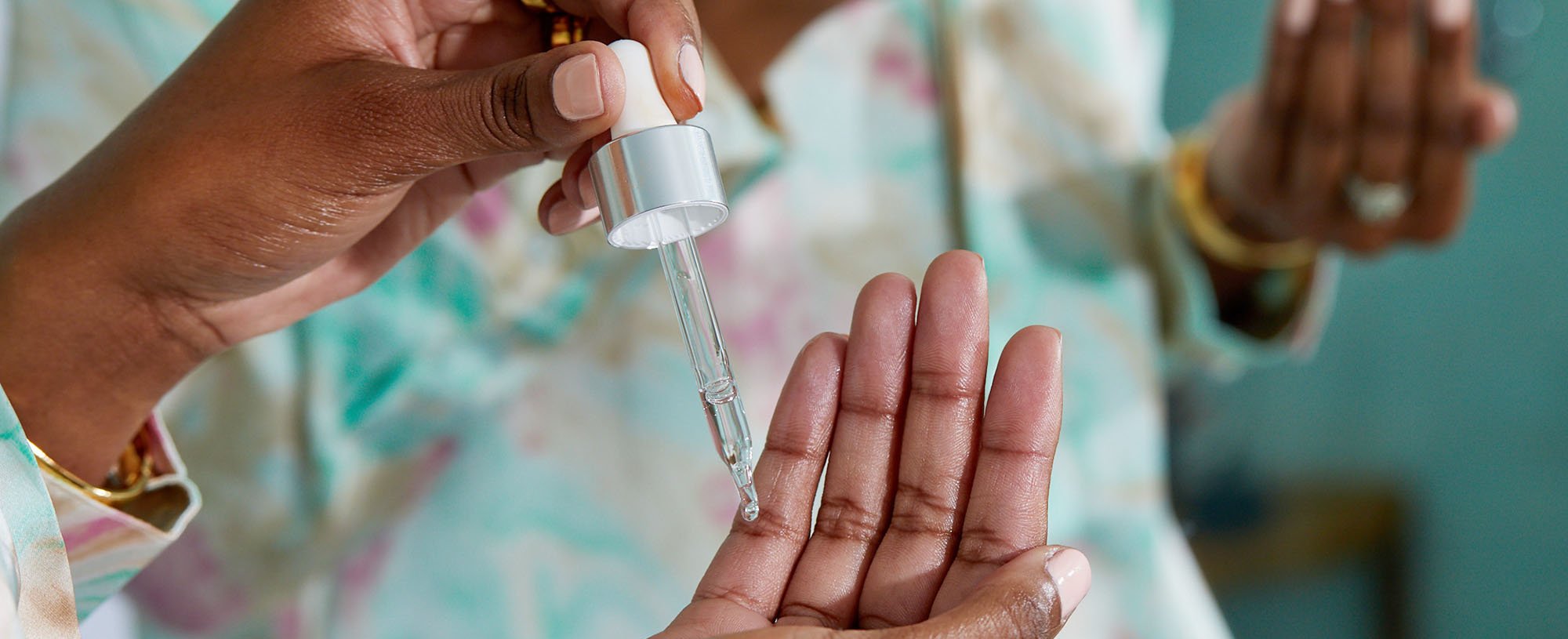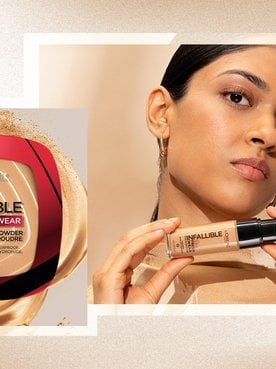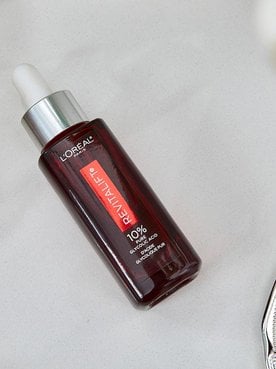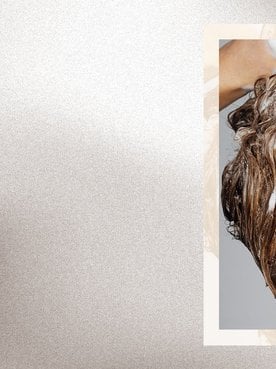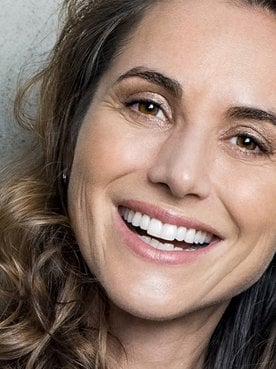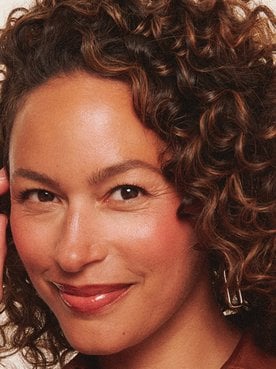As far as beneficial skin care ingredients go, retinol and retinoids are at the top of the list. These two terms are often used interchangeably, and while both refer to topical vitamin A that can treat wrinkles, acne, fine lines and more, they share some key differences.
Knowing the difference between retinol and retinoids is important because it can help you select the one that is better for your skin type. So, read on for a skin care lesson about the differences between retinol and retinoids, along with a few ways to incorporate these skin care powerhouses into your skin care routine.
Retinol vs. Retinoid: How Are They Different?
Retinoid is actually an umbrella term for various vitamin A derivatives, including retinol. According to research published by the National Center for Biotechnology Information (NCBI), the retinoid family includes vitamin A and its natural and synthetic derivatives, including retinoic acid and retinol. In other words, retinol is a type of retinoid, but every retinoid isn’t retinol, instead the term refers to many different topical formulations with vitamin A.
Other retinoids include both prescription and over-the-counter creams and medications, many of which are intended for the treatment of acne, according to the Cleveland Clinic. Per the Cleveland Clinic, examples of retinoids, aside from retinol, include retinal aldehyde and retinyl esters. These retinoids are used to improve acne and acne scarring, fine lines and wrinkles, skin texture and tone and skin hydration. According to Harvard Health, tretinoin was the first retinoid to be discovered and it’s still a popular prescription retinoid option today.
Most retinoids require a prescription from a doctor because they have a higher percentage of retinoic acid. Retinols contain a lower strength of retinoic acid, which is why they are available over-the-counter. The benefit of retinol is that its lower percentage makes it better for those with dry and sensitive skin, or for those who are new to retinoids.
What Do Retinoids Do?
Harvard Health states that retinoids increase cell turnover to detoxify clogged pores and reduce the appearance of fine lines, which is why they’re able to effectively treat acne and visible wrinkles. They also help to reduce fine lines and wrinkles by increasing collagen production, improving skin color and fading age spots.
What Does Retinol Do?
It should come as no surprise that retinol works similarly to retinoids, but as we said, since retinol is a non-prescription retinoid, the benefits do vary a bit. Harvard Health explains that because this over-the-counter option is not as strong (and therefore less irritating), it’s not as effective in reducing wrinkles as retinoids. That said, retinol can still be a good option for treating wrinkles, it just may not be as strong or fast-acting as the alternative. That said, it still has the ability to improve the appearance of photo-aged skin, which includes the likes of dark spots, uneven skin tone and dullness.
Is Retinol or Retinoids Better for Beginners?
The main difference between retinol and retinoids is their strength and how you get your hands on them. Because retinol has a lower dosage of retinoic acid, it’s better for beginners and those with sensitive skin, as it’s gentler. While retinol and retinoids can both do amazing things for acne, dark spots, fine lines and wrinkles, overdoing it can lead to over-exfoliated skin, increased acne, peeling, irritation and redness.
In short, too much of a good thing can go bad very quickly so it’s important to go low and slow when you introduce any kind of retinoid into your routine. This means going with a low percentage or dosage and slowly adding it to your routine (like once a week), building up usage as your skin can tolerate it.
How to Use Retinoids and Retinol in Your Skin Care Routine
If you’re ready to add a retinoid to your routine, you’ll need to head to your dermatologist to use a prescription formula, or you can use an over-the-counter retinol in your skin care regimen without a doctor's visit. Check out a few of our top retinol product picks, below.
L’Oréal Paris Revitalift Derm Intensives Night Serum, 0.3% Pure Retinol
This anti-wrinkle night serum is formulated with pure retinol. The formula works to moisturize, refine skin texture, reduce the appearance of wrinkles and fine lines and promote a brighter, more luminous complexion.
How to use it: For the first week of use, apply two to three drops to clean, dry skin twice a week. In the second week, increase the frequency to every other night. In the third week, increase to nightly use as long as your skin can tolerate it. Always use broad-spectrum SPF in the morning to protect the skin.
L’Oréal Paris Revitalift Pressed Night Moisturizer with Retinol + Niacinamide
This rich night cream includes retinol and niacinamide to target wrinkles, uneven skin texture and dark spots. It also includes hydrating glycerin to help moisturize the skin, counteracting the potential drying effects of retinol.
How to use it: Apply one pea-sized pump two nights per week to the face, under-eyes and crow’s feet. Follow with a pea-sized pump for your neck and décolletage. Increase usage every few weeks and your skin can tolerate it.
L’Oréal Paris Revitalift Triple Power Day Lotion SPF 30
This day lotion is formulated with vitamin C, hyaluronic acid, Pro-Retinol and SPF 30 to reduce wrinkles, firm, and brighten the skin, leaving it feeling smooth, softer and refreshed. It’s great for daytime use and the perfect solution for those that forget to apply SPF.
How to use it: Smooth it over your face and neck every morning as the last step in your skin care routine, before makeup.
L’Oréal Paris Revitalift Triple Power Anti-Aging Overnight Mask
This overnight mask also contains vitamin C, hyaluronic acid, and Pro-Retinol to visibly reduce wrinkles, firm and brighten skin with continued use. Apply it before bed and wake up to a visibly radiant, hydrated and refreshed complexion.
How to use it: Smooth it over your face and neck every evening as the last step in your nighttime skin care regimen. Wash it off in the morning before applying your morning skin care products.
L’Oréal Paris Revitalift Triple Power Eye Treatment
Formulated with the aforementioned Pro-Retinol, hyaluronic acid, and vitamin C, this eye cream works to visibly reduce wrinkles, de-puff and brighten the under-eye area. It also targets dark circles, helping the sensitive skin on your under-eyes look more radiant and refreshed.
How to use it: Use the metal tip to massage gently around the eye area until thoroughly absorbed. Apply the cream every morning and evening.
Next: 14 Skin Care Rules to Follow If You Have Dry Skin
Photographer: Chaunte Vaughn, Senior Art Director: Melissa San Vicente-Landestoy, Associate Creative Producer: Becca Solovay, Makeup Artist: Jonet Williamson, Hair Stylist: Akihisa Yamaguchi, Wardrobe Stylist: Adriana Perez-Bell, Digital Tech: Paul Yem, Model: Chelsea Vaughn
